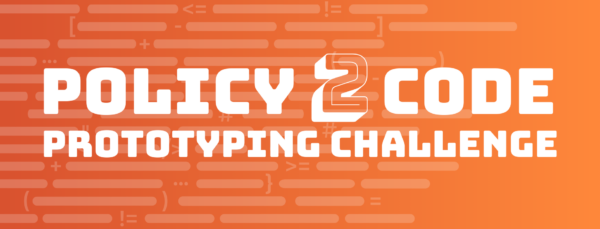Thesis
Forty-five years represents my lifetime. It also represents a millennium of changes – some good, some bad – in the human services space. This newsletter asks the question, “Can we do human services better, so that in 45 years those that follow see us as forward-thinking change agents, not as those that squandered their opportunity to improve systems for children and families?”
Story
NOTE: ChatGPT (Generative AI) was utilized to assist in writing this newsletter. Transparency in this space is important
With all the exciting developments in the human services space recently, there was a new conversation at the American Public Human Services Association’s annual national Health & Human Services Summit. Since the release of Chat GPT a few months ago, leaders from across the nation were eager to gather and discuss the opportunities and risks associated with Generative Artificial Intelligence. I had dozens of formal and informal conversations on this topic, and by and large, those conversations were optimistic and positive. It is clear that government is moving towards an attempted embrace of this technology. It is also clear that leaders who feel deeply and personally connected to serving have a healthy skepticism and a desire to build guardrails and share progress with each other around this technology.
On the flight home, I asked GPT4.0 to ‘create a fictional story about how AI can help a person in need,’ and the output was something I wanted to share.
‘Once upon a time in the small town of Oakridge, there lived a young woman named Emily. She had faced numerous challenges throughout her life, including a visual impairment that made everyday tasks more difficult. However, her indomitable spirit and determination kept her moving forward.
One day, Emily came across an advertisement for a newly developed AI companion designed to assist individuals with disabilities. Intrigued, she decided to give it a try, hoping it could offer some support in her daily life.
The AI companion, named “Aria,” was an advanced AI system equipped with natural language processing and computer vision capabilities. Aria could understand and respond to Emily’s voice commands, making tasks more accessible and intuitive.
From the moment Emily activated Aria, her life took a remarkable turn. The AI companion quickly became an invaluable ally, transforming her day-to-day experiences. Aria assisted Emily in reading books, emails, and articles by using optical character recognition to convert text into speech. This opened up a world of knowledge and literature that she had previously struggled to access.
Not only did Aria assist with reading, but it also became a reliable navigator. Using real-time mapping and object detection, Aria guided Emily through her town, describing the surroundings and alerting her to obstacles or potential hazards. With Aria by her side, Emily gained newfound independence and confidence, confidently traversing the streets she once found daunting.
Aria’s assistance extended beyond physical tasks. The AI companion utilized machine learning algorithms to learn Emily’s preferences and interests, suggesting new activities and hobbies that aligned with her passions. It even recommended accessible art classes where Emily could explore her creativity through tactile experiences.’
Within days of hearing about ChatGPT and learning about Generative AI, it became clear that the promise of this technology is dramatic. It is also clear that government must take the lead in promoting its ethical deployment or the risk of being overrun would be dramatic. We all know that government isn’t good at taking the lead in these situations, but the current national landscape in human services is full of leaders and teams that can reverse the historical trend of government complacency. The sense of urgency is great. The opportunity is inspiring. The downside risk of inaction is severe and the most likely outcome if the human services system doesn’t take the lead now.
Three Bullets
Government involvement is crucial in shaping the AI landscape for the betterment of all. Here’s why:
• Ensuring Ethical Deployment: Government leadership is crucial in governing the deployment of AI in human services to ensure ethical practices. By taking the lead, governments can establish clear guidelines and regulations that prioritize fairness, transparency, and accountability. This helps prevent biases and the misuse of AI technologies, ensuring that all populations are protected and citizens receive improved access to services.
• Safeguarding Privacy and Data Protection: AI in human services often involves the collection and analysis of sensitive personal data. Governments must play a key role in governing the deployment to safeguard privacy and ensure data protection. By establishing robust data governance frameworks, governments can regulate the collection, storage, and use of data, ensuring compliance with privacy laws and preventing unauthorized access or misuse.
• Promoting Human-Centered and Inclusive Services: The deployment of AI in human services should prioritize human well-being, inclusivity, and individual autonomy. Government leadership is essential to set standards that ensure AI systems are designed with a human-centered approach, maintaining the dignity and rights of service recipients. By taking the lead, governments can encourage the development of AI systems that are accessible, understandable, and respectful of diverse needs, fostering streamlined service provision.
Overall, government leadership in governing the deployment of AI in human services is vital to establish ethical practices, protect privacy, and promote human-centric approaches. By setting clear regulations and guidelines, governments can ensure that AI technologies are deployed responsibly, benefiting society as a whole while upholding principles of fairness and promoting privacy and data security.
Lessons Learned
We are continually learning more, but there are lessons learned in other venues that can be helpful in the discussion around AI.
1. Collaboration and Stakeholder Engagement |The process of AI governance requires collaboration among governments, industry experts, policymakers, and the public. Engaging stakeholders from various backgrounds and perspectives ensures that governance frameworks consider diverse viewpoints and address the concerns and needs of all. Effective collaboration promotes legitimacy and transparency in the governance process.
2. Continuous Learning and Adaptation | The field of AI is rapidly evolving, and governance structures must adapt accordingly. Governments must foster a culture of continuous learning and keep pace with emerging technologies, new challenges, and the evolving ethical landscape. Regular evaluation and refinement of governance frameworks are crucial to ensure their relevance and effectiveness.
3. Global Cooperation and Harmonization | AI transcends national boundaries, necessitating international cooperation in governance efforts. Governments should foster collaboration, share best practices, and harmonize standards to address cross-border challenges such as data governance and ethical considerations. Global cooperation enables collective action, promoting responsible AI development on a global scale.
True North Principles… we must…
1. Ethical Accountability | Prioritize ethical considerations and hold organizations accountable for the ethical implications of their AI systems. Establish clear guidelines and regulations that promote transparency, fairness, and accountability in AI development and deployment.
2. Human-Centered Design | Ensure that AI technologies are designed with human well-being and societal benefit in mind. Focus on creating AI systems that augment human capabilities and promote positive social impact.
3. Continuous Evaluation and Adaptation | Implement mechanisms for ongoing evaluation, monitoring, and adaptation of AI governance frameworks. Foster a culture of learning, encouraging regular updates to address emerging challenges and capitalize on new opportunities.
By embracing these principles and establishing effective governance structures, governments can steer AI towards a future that benefits society as a whole.
The End of the Story
As Emily shared her experiences with Aria with friends and family, word quickly spread about the transformative power of AI assistance. Others in the community began to recognize the potential of AI in helping those in need. Inspired by Emily’s story, the local government collaborated with AI developers to ensure that AI companions like Aria were accessible to all residents who required assistance.
With the support of the government, AI companions like Aria soon became readily available to people with various disabilities throughout Oakridge. The town saw a significant improvement in the lives of its residents as AI technology provided newfound opportunities and independence.
Emily’s story not only highlighted the immense benefits of AI assistance but also emphasized the importance of empathy and human connection. While Aria enhanced Emily’s capabilities and empowered her, it was the combination of technology and compassion that truly made a difference.
As time went on, AI companions like Aria continued to evolve, becoming more intuitive and personalized. They became trusted companions, enabling individuals with disabilities to break barriers, pursue their dreams, and contribute to their communities in meaningful ways.
Emily’s journey exemplified the incredible potential of AI to positively impact the lives of those in need. It served as a reminder that, with the right technology and compassionate implementation, AI could be a powerful tool in creating a more inclusive and supportive society.
And so, the town of Oakridge became a shining example of how AI, when harnessed for good, could transform the lives of individuals and foster a community that valued diversity and accessibility.
The end.
Note: This fictional story (written by AI) emphasizes the positive aspects of AI technology and its potential to assist individuals with disabilities. It’s important to remember that AI should always be developed and used responsibly, with consideration for ethical guidelines and human-centered design principles.









